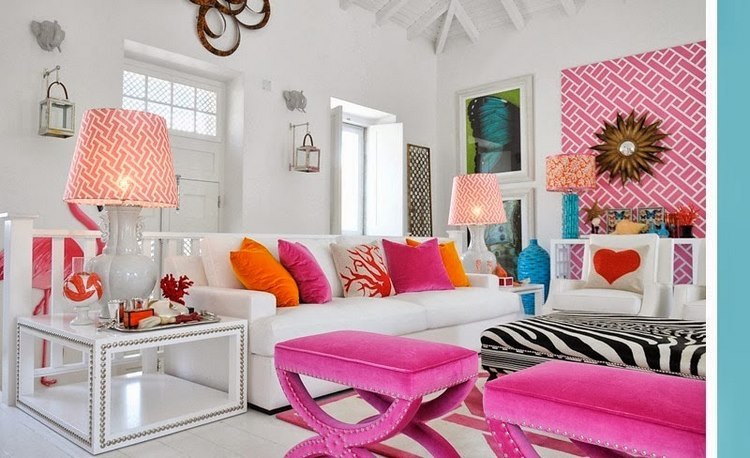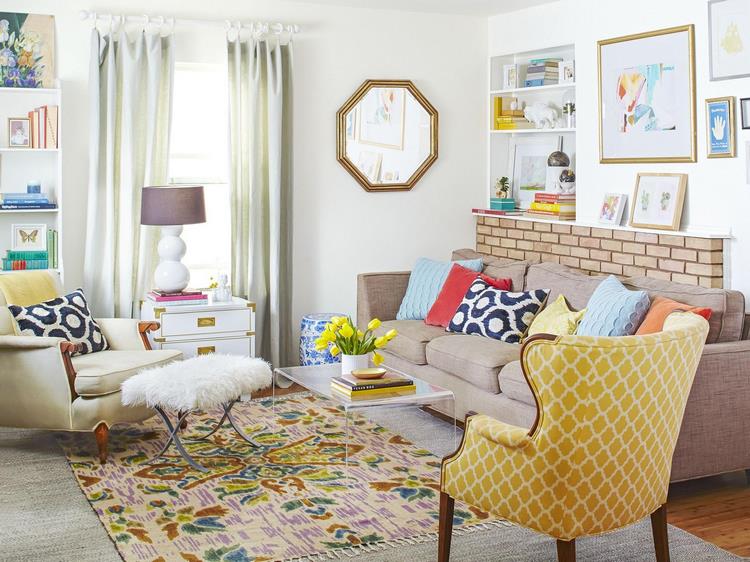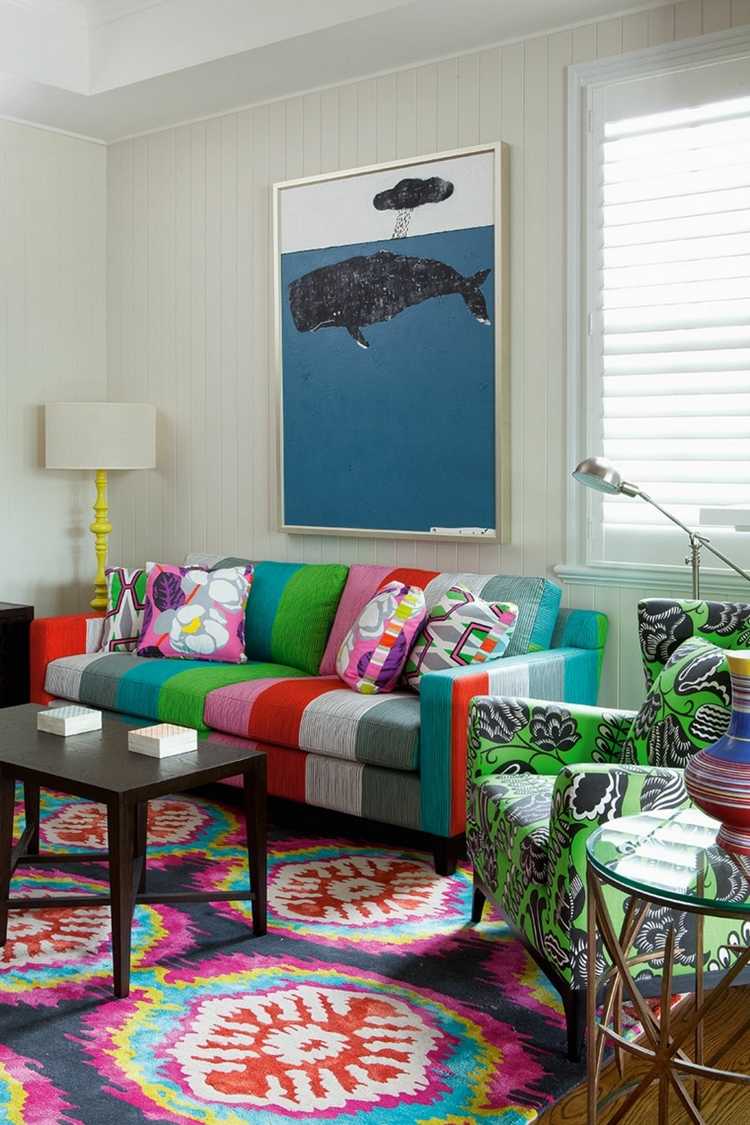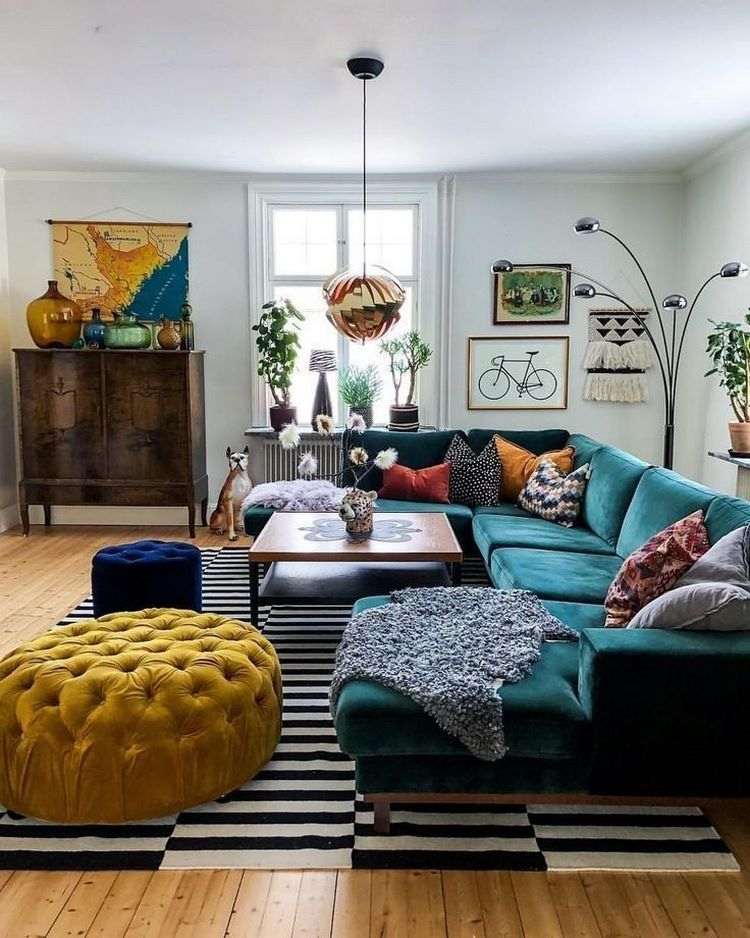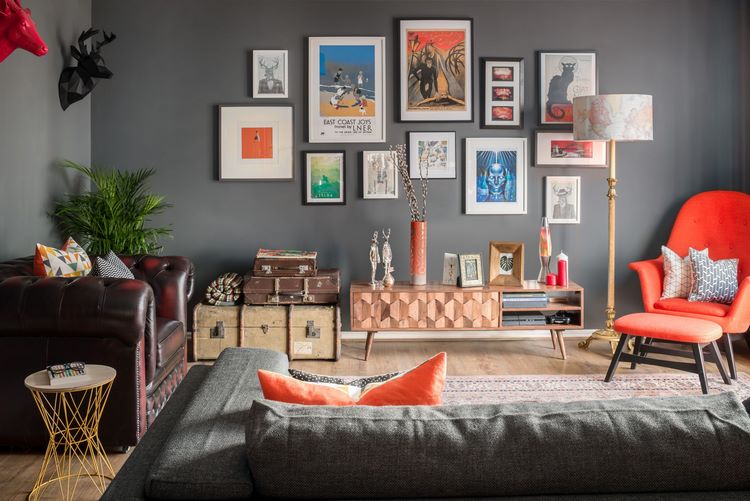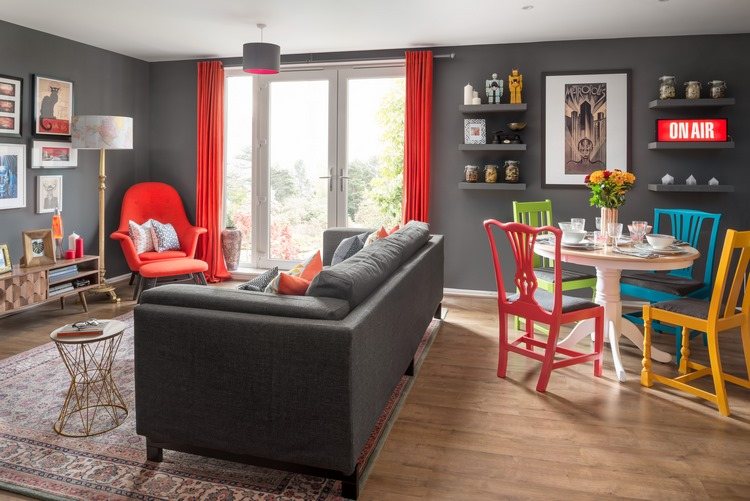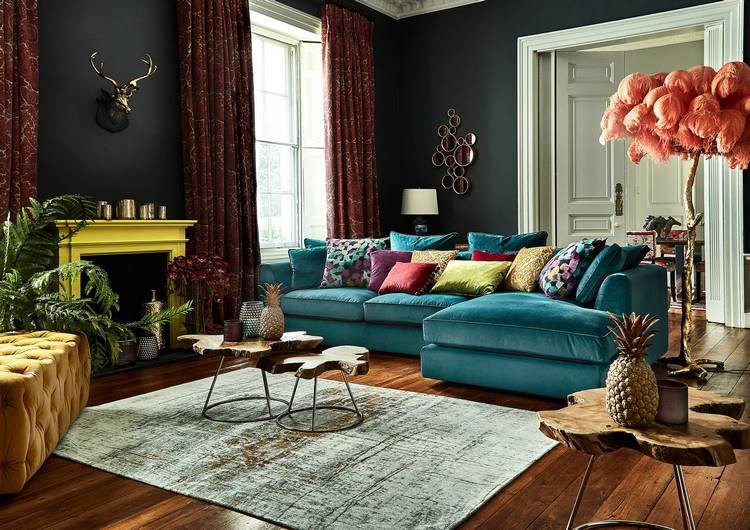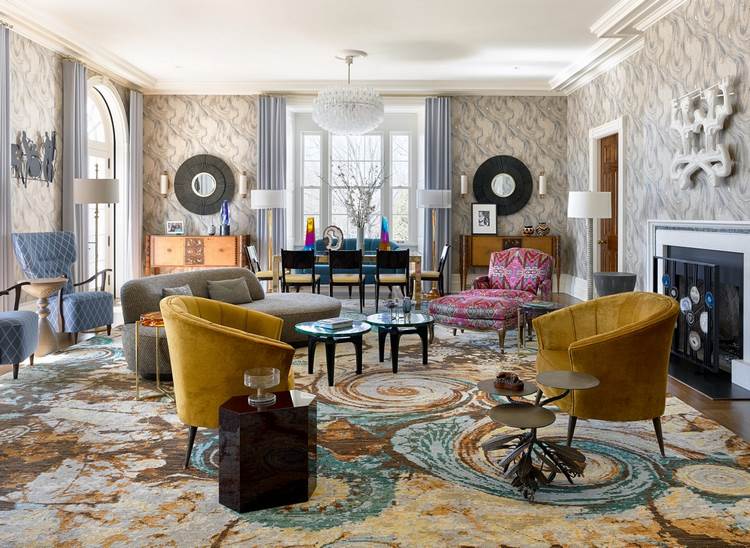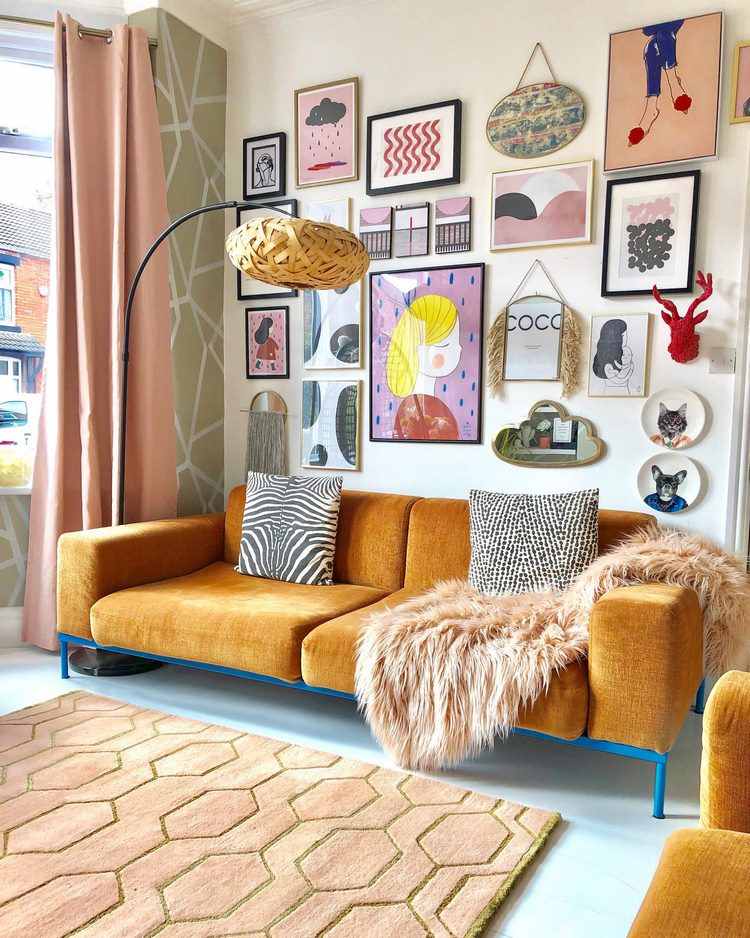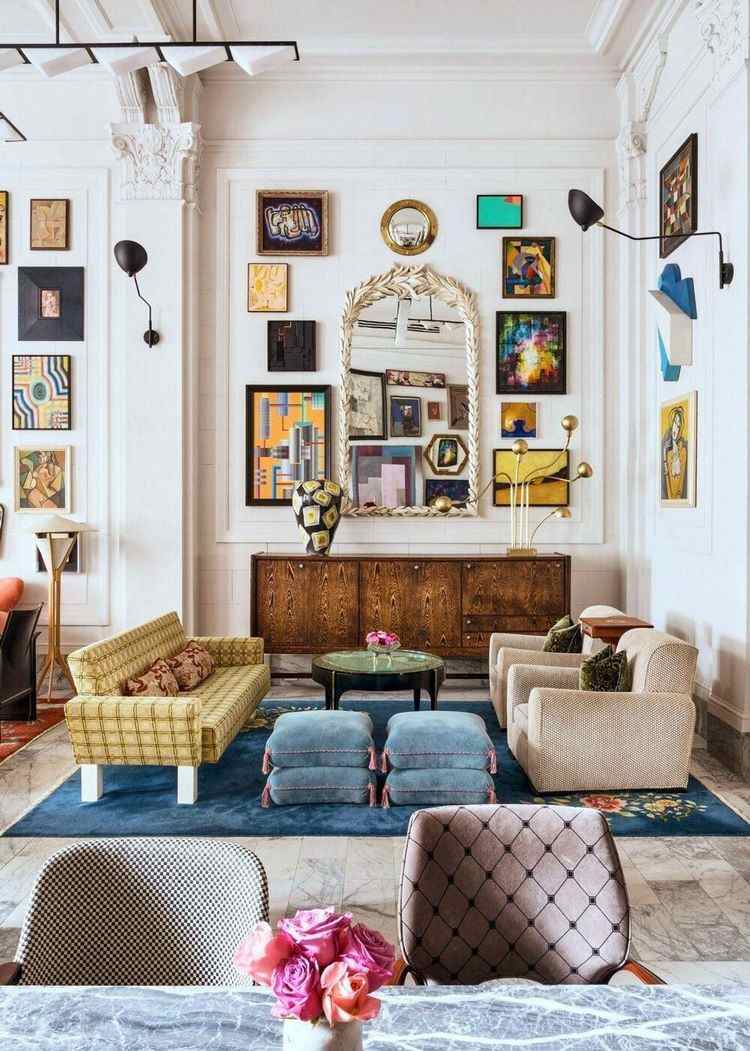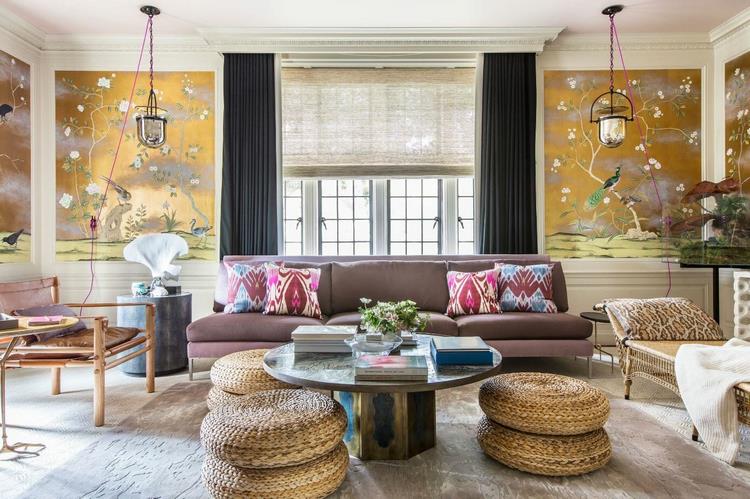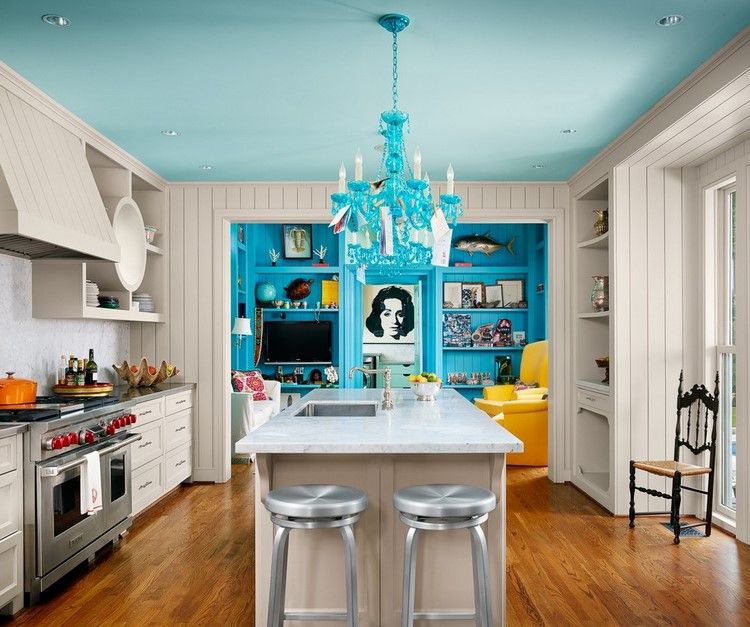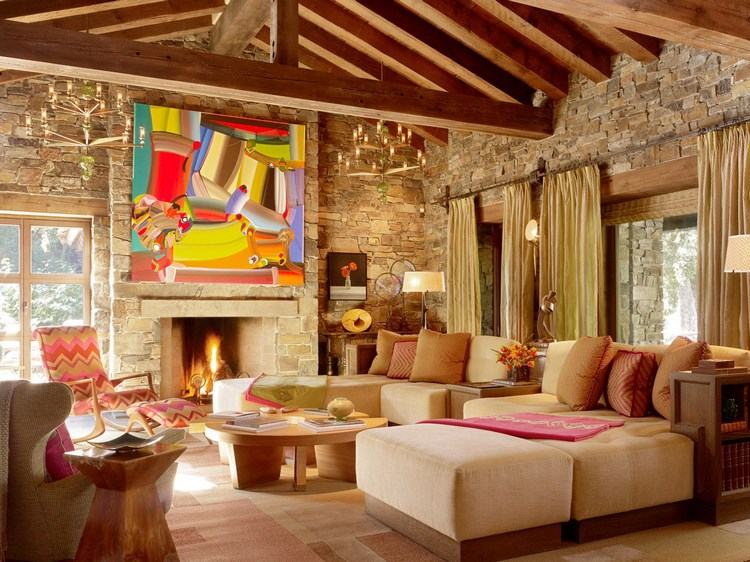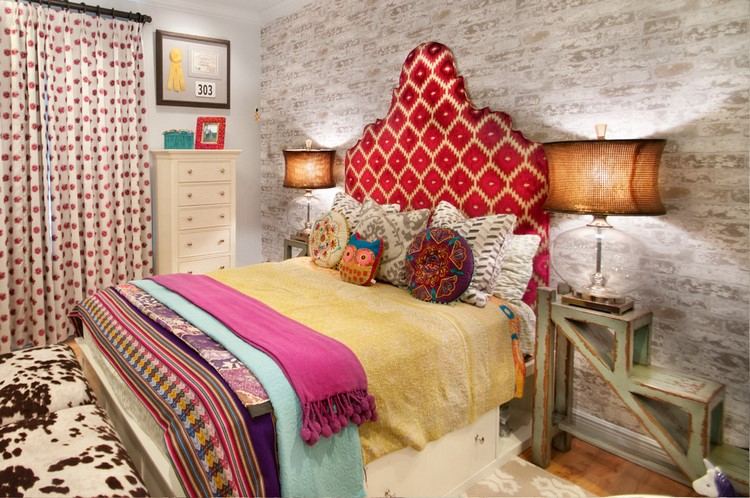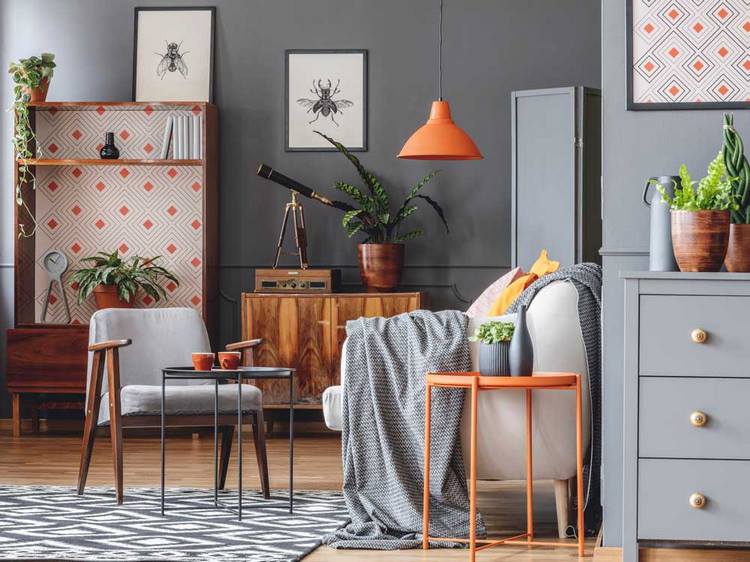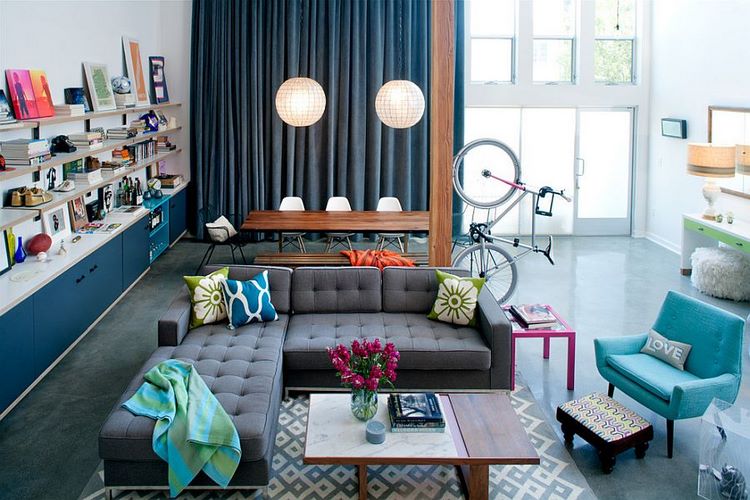Eclectic style in interior design is experimenting with form, color, mood, which means a certain risk, which ultimately results in creating of a unique living space. To many, this style is a combination of what would seem to be incompatible. Does this mean that any chaotic combination of objects and styles can be called eclectic? Certainly not! At first glance, eclectic interiors look like a mixture of everything. However, like any other concept in the interior, eclectic decors follow certain rules, and, in addition, it is one of the most difficult styles to work with. Without any doubt, a chaotic and improper combination of different objects can be a complete disaster.
In interior design, this decorative style allows mixing colors and textures, new and old furniture pieces, minimalist and even futuristic objects. And that is the essence of eclectic style – blending and combining! Of course, all the details of the interior should work harmoniously with each other. Eclectic interiors, as a rule, are quite individual and artistic, and homes decorated in this style are not similar to any other home. How to create an original and elegant eclectic interior? What are the main characteristics of the style? How to decorate your home without crossing the thin line of good taste? We shall help you understand the basics of decorating a room or a home in this amazing and emotional style!
When and how eclectic style originated?
Eclectic style appeared in the 19th century and originally meant a mixture of Baroque, Classicism and Renaissance. Avant-garde artists were searching for extraordinary ideas and experimented with color, shape, material, the manner of expressing thoughts and feelings. The appearance and development of the eclectic style can also be associated with a certain fatigue from the rigid framework of the classic design used not only in interior design but in architecture. Artists discovered that new things can be created by skillfully mixing together elements of old, well-known directions with the latest trends. In the 19th century the pace of construction increased and the functional purpose of new buildings increased.
At first, eclecticism was associated with bad taste. Despite this, the new style was successfully used in the time of romanticism, where, in contrast to strict rules, freedom of expression of thoughts of feelings was set. The new design style began to include everything that was fashionable, comfortable, relevant and attractive in the styles preceding it.
Nowadays any interior that cannot be defined into one particular style is usually called eclectic. Freedom, lack of cliches, multicomponent, mixture of all kinds of shapes, colors, materials, proportions, natural and ethnic motifs – all this gives maximum opportunities for imagination in interior design.
Many consider the reason for the popularity of the eclectic style to be romanticism, which implies absolutely free movement in historical periods and the rejection of the strict framework and canons established before in art. The avant-garde artists, trying to create something fundamentally new, almost always stumbled upon what was used in the cultures of India or China, Mesopotamia.
Eclectic style attracts many people with its originality. The secret of its popularity lies in human psychology. You do not need to give up your favorite things just because they do not fit into any chosen theme. Combining the elements of several design styles you can get a harmonious and fashionable, completely individual, customized environment for a particular person.
What is the main concept of eclectic style in interior design?
The main concept of eclectic style in interior design is to borrow ideas from different periods of time and of different origin and artfully combine them in one project. Of course, this style requires a lot of knowledge, ideas and creativity so that the interior looks great and at the same time its elements are logically interconnected. Eclectic style incorporates the best and most attractive features and individual details of different styles, which together allow the designer to create a harmonious, holistic interior.
Creating a modern eclectic style, designers try to mix elements from no more than three stylistic types, which are combined with each other by texture, architectural direction, and a single color scheme. For example, classicism can be successfully combined with empire style. A competent designer harmoniously combines all the selected items, decorative elements, accessories and furniture into a single ensemble.
An eclectic interior design is successful when all the elements from different styles complement and emphasize each other, and the elements of space are ideologically connected. Designers pay special attention to minor elements, the main purpose of which is to combine the entire design into a single fashionable style. Here are some of the key features of the style:
- The interior is distinguished by rounded corners, “retreating forms” and strict vertical lines.
- Eclectic style in interior features furniture, the decorative elements of which are made in the form of geometric shapes and various circles.
- Silk wallpapers are used on the walls, and windows and doors are decorated with heavy fabrics with soft drapes. Floors are covered carpets from natural materials.
- Frames for paintings and mirrors have gilded elements.
- Chandeliers from gilded wood or glass are also typical.
Basic features of eclectic style in interior design and inspiring home decorating ideas
Nowadays the term eclectic is used to describe an interior design which can not be attributed to any particular style. This, of course, does not mean that any chaotic mixture of random objects and finishes can be considered fashionable. The truth is that this is of the most difficult interior decor concepts precisely because the need of balance between clever combination and bad taste. The skill is to choose the right elements that complement each other and at the same time do not lose their individuality. You can combine elements from traditional classics, baroque, ethnic, modern, hi-tech styles and the question is how to do this.
- Versatility is one of the main advantages of this style.
- It is good for any room, from the living room to the bathroom. It is enough to rearrange, remove or add some pieces of furniture, change textiles, accessories, decor elements and surprise your guests with a new interior.
- Multiple layers
- The textural diversity is a must for an eclectic design. Most often designers use the following techniques:
- Combine different materials in one room, for example wood, metal, plastic;
- Arrange a soft ottoman next to a glass table with metal legs;
- Place a classic landscape next to a cutting-edge poster;
- Combine smooth silk and coarse burlap.
- Combining different design styles
We already explained that to create a design in eclectic style means to combine different eras, cultures, traditions, and artistic trends in one room. To avoid a ridiculous result, designers recommend using no more than three directions for interior decoration within the same color scheme and textures. It is better to choose a simple style as a base, for example, minimalism, Scandinavian, Industrial and already add elements from other styles.
Eclectic interior design and color schemes
Color is one of the main techniques to logically combine an environment. The palette depends on the individual preferences of the homeowner and one can use almost any color – pastel and bright. It is better not to combine more than five colors, so as not to drown in шге diversity of shades and hues. Accuracy is essential and very important when choosing a common color scheme. Often, exactly the same shades become a connecting link for combining elements in the interior.
For walls, a neutral background or dark muted color is suitable, the second main color is for furniture, large accessories, carpets and curtains, and the rest for small accent details. Background surfaces (walls, ceiling, floor) should not compete with eye-catching elements and accents. The color palette includes combinations like white and blue, beige, pink and burgundy, light grey and smoky grey, ivory and olive green, etc. If a neutral background seems too simple, you can always add expressiveness with a bright carpet on the floor, a lot of paintings on the wall, colorful curtains, etc.
Wall finish and decoration
Any materials are acceptable for wall decoration – paint, whitewashing, decorative plaster, wallpaper, fabric, wooden panels, stone, stucco molding, mosaic, ceramic tile, brick, etc. The interiors in this style are full of paintings, tapestries, posters and panels. You can combine old portraits and modern photographs, vivid landscapes and graphics, large abstract paintings and small detailed drawings.
Size and proportions
In eclectic style, any sizes and proportions can easily get along, but provided that their coexistence does not violate the overall harmony and integrity of the interior. It is necessary to place all objects and elements in such a way so that they emphasize and complement each other
Contrast
One of the most characteristic features of eclectic style in design is contrasts. Do not be afraid to experiment with any directions, shapes and colors. You can, of course, mix similar items but the effect of contrasting combinations is much more interesting. Combine white with black, bright with muted, straight lines with curved, strict with frivolous, smooth with textured. Combine objects from different styles, for example, classic vintage chairs with a bright simple sofa, an artsy antique table and a modern chair with colorful upholstery, a simple antique chest of drawers with modern posters, etc.
Furniture
The harmonious blend of furniture in different styles is the basis of eclectic style. A Victorian chest of drawers, baroque armchairs and a modern sofa can coexist in one room. Furniture pieces with dynamic shapes are highly valued. Vintage items are welcome – refurbished chairs, dressing tables, furniture with wooden carvings can be combined with be sofas and armchairs with modern silhouettes and colors.
Textile
Textile is an important component in eclectic interior design. It gives comfort and warmth to the room. Use carpets, napkins, tablecloths, pillows, scarves and other textile accessories of various colors and patterns.
Accessories
A characteristic feature of eclectic style in the interior design is the abundance of various decorative elements. Accessories play an important role in this style. Most often, it is they who create contrasts in the room, while at the same time are used as a connecting link between the elements of the decor. Accessories are selected in accordance with two principles – similarity with the main decoration of the room in which case you need a repetition of textures, ornaments, palettes or, contrast. The second option is typical of the eclectic style. For example a vintage chandelier can be combined with a high-tech metal fixture, a gilded mirror frame against a background of rough brickwork, a chair with fluffy upholstery and a leather pouf, etc.
How to decorate your home in eclectic style? Eclectic design is suitable for every room of the home – kitchen, bedroom, living room, home office and even a bathroom. Experts suggest starting with one room – the living room. To begin with, you should determine two basic points of the interior. Starting from the basic points, you can create the eclectic appearance and design. Consider lighting, flooring, wall decor, textile elements, cabinet and upholstered furniture. The choice of decorative elements comes only when you have already decision on functional objects.

